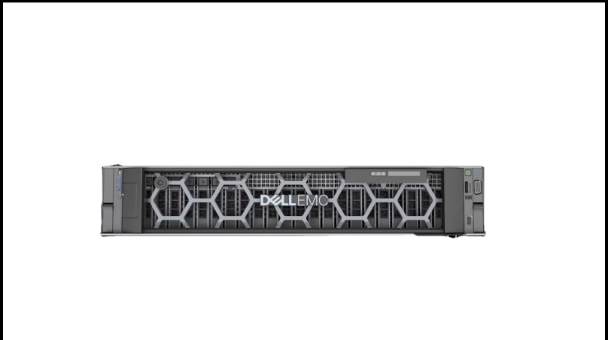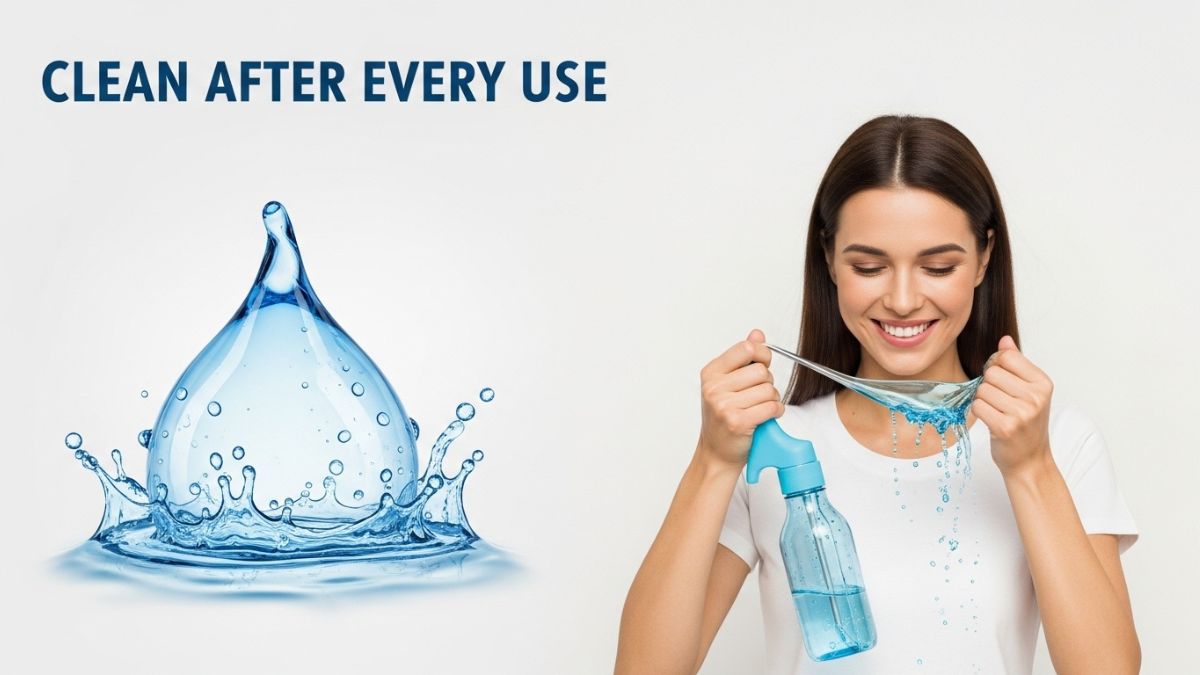GENERAL
Best Tips for Maintaining and Upgrading Dell Server Memory

Dell servers are known for their reliability and performance, but proper memory maintenance and timely upgrades are essential to keep them running smoothly. Whether you’re managing a business server or a data center, optimizing Dell server memory can improve speed, efficiency, and overall system stability. Here are some of the best tips for maintaining and upgrading your server’s memory.
1. Regularly Monitor Memory Usage
Before making any upgrades, it’s important to monitor how your Dell server is using memory. Use built-in tools like Dell OpenManage, Windows Task Manager, or Linux commands to check for high memory usage. If your server frequently hits its memory limit, an upgrade might be necessary. Additionally, consider setting up monitoring alerts to proactively identify memory constraints before they impact performance.
A well-monitored server can help prevent unexpected downtime and ensure optimal utilization of available resources. Understanding your server’s workload trends can also help in making informed decisions about when and how much memory to upgrade.
2. Keep the Server Environment Clean and Cool
Dust and overheating can impact your server’s performance, including its memory modules. Ensure your server is placed in a cool, dust-free environment with proper airflow. Regularly clean vents and fans to prevent overheating, which can cause memory errors or system crashes.
Overheating can lead to throttling, reduced performance, and even permanent damage to components. Consider investing in rack-mounted cooling solutions, server room air conditioning, or even liquid cooling systems if your data center experiences high temperatures.
3. Use Compatible and Certified Memory Modules
When upgrading your Dell server’s memory, always choose Dell-certified RAM or modules from trusted brands that meet Dell’s specifications. Incompatible memory can lead to system instability or failure to boot. Check your server model’s manual to find the supported RAM types and configurations.
Using certified memory ensures reliability and compatibility, reducing the risk of hardware failures or voiding warranties. Dell PowerEdge servers, for instance, have specific memory speed, voltage, and capacity requirements that should be met to avoid performance degradation.
4. Follow Proper Installation Procedures
Installing new memory incorrectly can lead to hardware damage or performance issues. Follow these steps:
- Power off the server and unplug it.
- Use anti-static precautions (wear an anti-static wrist strap).
- Insert RAM sticks into the correct slots, following Dell’s recommended slot configuration for best performance (e.g., filling slots in pairs for dual-channel memory).
- Secure modules properly to avoid loose connections.
- Power on and verify the new memory is recognized in BIOS.
If you are upgrading multiple servers in a data center, having a standardized installation procedure and keeping track of memory configurations can help streamline the process.
5. Update BIOS and Firmware
Outdated BIOS or firmware can cause compatibility issues with newly installed RAM. Regularly update your Dell PowerEdge server’s BIOS and firmware through Dell’s official support site to ensure stability and optimal performance.
Keeping your BIOS and firmware up to date can also enhance security, as updates often include important patches for vulnerabilities that could be exploited by attackers.

6. Enable Error-Correcting Code (ECC) Memory
Most Dell servers support ECC RAM, which detects and corrects memory errors automatically. If your server is running mission-critical applications, enabling ECC can help prevent crashes and data corruption.
ECC memory is especially useful in environments where data integrity is crucial, such as financial institutions, healthcare, and enterprise-level data centers.
7. Optimize Virtual Memory Settings
If upgrading physical RAM isn’t immediately possible, optimize your virtual memory settings to improve performance. Adjust the page file size in Windows or swap space in Linux to reduce memory bottlenecks.
While virtual memory cannot fully replace physical RAM, properly tuning these settings can help manage workloads more effectively, especially on servers with limited memory capacity.
8. Perform Routine Memory Tests
Regularly run diagnostic tests to check for failing memory modules. Use Dell’s Pre-boot System Assessment (PSA) or third-party tools like MemTest86 to identify faulty RAM early and replace it before it affects performance.
Faulty memory can cause random system crashes, application errors, and data corruption. Scheduling routine memory tests can help maintain system stability and prevent unexpected failures.
9. Plan for Future Expansion
As your business grows, your server’s memory demands will increase. When considering Dell memory upgrades, think ahead about your future requirements. Opt for scalable configurations that allow for easy expansion without replacing the entire system.
For example, if your workload is expected to increase over time, consider purchasing higher-capacity RAM modules upfront to avoid replacing existing ones later. Additionally, having a structured upgrade plan can minimize downtime and ensure a smooth transition.
10. Consider Cloud or Hybrid Solutions
If your workload fluctuates significantly, consider integrating cloud-based memory solutions with your on-premises Dell servers. Hybrid cloud solutions can help balance memory usage and optimize performance without requiring excessive hardware investments.
11. Train IT Staff on Memory Management
Ensuring that your IT team understands the best practices for memory maintenance and upgrades can prevent common mistakes and improve efficiency. Regular training sessions and documentation of upgrade procedures can make server management more effective.

Final Thoughts
Maintaining and upgrading server memory doesn’t have to be complicated. By regularly monitoring memory usage, ensuring a clean environment, using compatible RAM, and following proper installation procedures, you can keep your server running at peak performance. If your server starts slowing down or struggling with workloads, consider upgrading its memory for a smooth and efficient operation.
Additionally, staying proactive with firmware updates, ECC memory, and structured upgrade plans can help maintain stability and reduce the risk of system failures. Investing in cloud integrations and IT training can also enhance your overall memory management strategy.
By following these best practices, you can extend the lifespan of your Dell server and maximize its efficiency. For high-quality server memory solutions, consider trusted providers like Cloud Ninjas, which offer reliable and certified Dell server upgrades to keep your system performing at its best.
GENERAL
Stormuring: The Art of Harnessing Creative Energy in a Chaotic World

In a world buzzing with distractions and unpredictability, harnessing creativity can feel like trying to catch lightning in a bottle. Enter the concept of stormuring—a dynamic approach that allows individuals to channel their creative energy amidst chaos. It’s more than just brainstorming; it’s about embracing the tumult around us and transforming it into innovative ideas. As we navigate through our busy lives, understanding how to tap into this powerful resource becomes essential for personal growth and societal progress. Let’s explore the art of stormuring and discover how you can turn disorder into inspiration.
The Importance of Creative Energy in Today’s World
Creative energy is the lifeblood of innovation. In a world overflowing with information, standing out requires fresh ideas and unique approaches.
Harnessing this energy can lead to groundbreaking solutions in various fields—from technology to art. It drives progress, pushing boundaries that often seem insurmountable.
Moreover, creativity fosters resilience. During challenging times, inventive thinking allows us to adapt and thrive amid chaos. Embracing creative energy means embracing change itself.
In workplaces, nurturing such an environment can spark collaboration and enhance productivity. When individuals feel empowered to express their thoughts freely, they contribute more meaningfully.
At its core, creative energy connects people across diverse backgrounds and experiences. It cultivates understanding and empathy while inspiring collective action toward shared goals.
Understanding the Chaos and How it Affects Creativity
Chaos surrounds us daily. From the noise of city life to the constant influx of digital information, it can feel overwhelming. This chaotic environment often disrupts our creative flow.
Yet, chaos is not always a negative force. It can serve as a catalyst for innovation and imagination. When faced with disorder, we are pushed to think outside conventional boundaries.
Creative energy thrives on stimulation. The unpredictability of chaos ignites curiosity and inspires unique ideas. However, too much turmoil may lead to stress or burnout, stifling creativity instead.
Understanding this balance is crucial for harnessing creative potential effectively. Recognizing how external factors affect our mindset allows us to navigate through disorder more thoughtfully and productively. Embracing chaos could unlock new avenues for expression if approached correctly.
The Benefits of Stormuring for Individuals and Society
Stormuring offers a plethora of benefits that extend beyond individual creativity. For the individual, it acts as a powerful tool to channel chaotic thoughts into productive energy. This shift not only boosts personal satisfaction but also enhances mental clarity.
On a societal level, stormuring fosters collaboration and innovation. By encouraging diverse perspectives, communities can tackle complex problems more effectively. When people come together in this dynamic way, they create solutions that resonate across various fields.
Moreover, stormuring cultivates resilience amid uncertainty. In times of chaos, those who practice this art are better equipped to adapt and thrive. They harness unpredictability as an opportunity rather than a setback.
In workplaces and creative spaces alike, the ripple effect of stormuring can lead to groundbreaking ideas and transformative projects that benefit everyone involved.
Incorporating Stormuring into Daily Life and Routine
Incorporating stormuring into your daily life can be transformative. Start by carving out dedicated time for creative exploration. This could be as simple as a morning ritual where you allow thoughts to flow freely, unhindered by judgment.
Consider creating a chaos-friendly environment. Surround yourself with inspiring visuals or sounds that stimulate your imagination. A cluttered desk may spark new ideas while nature’s ambiance can soothe the mind.
Engage in spontaneous activities throughout the day. Try doodling during meetings or brainstorming sessions without constraints. Embrace unpredictability; it often leads to unexpected insights.
Connect with like-minded individuals who share your passion for creativity. Collaborative stormuring, whether through group discussions or workshops, can amplify energy and innovation.
Embrace breaks from routine when needed—allowing moments of stillness fosters deeper connections with your creative self and helps recharge those energetic sparks essential for effective stormuring.
Case Studies: Successful Examples of Stormuring in Action
One striking example of stormuring can be seen in the tech start-up, Slack. The team embraced chaos during their brainstorming sessions, encouraging all ideas without judgment. This open environment led to innovative features that transformed workplace communication.
Another notable case is Pixar Animation Studios. Their unique “Braintrust” meetings allow directors and writers to present unfinished work for feedback. This practice turns potential hurdles into collaborative opportunities, harnessing creative energy in a seemingly chaotic process.
In the world of fashion, designer Vivienne Westwood often draws inspiration from unexpected sources. Her willingness to explore unconventional themes has resulted in groundbreaking collections that challenge norms and spark conversations across cultures.
These examples highlight how embracing disorder can foster remarkable creativity and collaboration across various fields, demonstrating the true power of stormuring when applied effectively.
Conclusion:
Stormuring is more than just a concept; it’s a powerful practice for channeling creativity amidst the chaos of modern life. As we navigate through uncertainties, our creative energy becomes essential in tackling challenges and sparking innovation.
By embracing stormuring, individuals can unlock their potential while contributing positively to society. The benefits are manifold—from increased productivity to enhanced collaboration. When we learn how to harness this creative energy effectively, both personal growth and collective progress follow suit.
Incorporating stormuring into daily routines doesn’t require drastic changes. Simple practices like brainstorming sessions or mindful breaks can make a significant impact on creativity levels. As seen in various case studies, organizations and individuals that have adopted this approach often experience remarkable transformations.
GENERAL
How to Care for Your zuschneidfelle: Tips for Longevity and Performance

If you’re passionate about skiing or snowboarding, you know that the right equipment can make all the difference on the slopes. One essential component often overlooked is zuschneidfelle. These specialized skins are designed for climbing and provide grip when traversing uphill, making them a must-have for any backcountry enthusiast. However, like any piece of gear, they require proper care to ensure they perform at their best season after season.
In this guide, we’ll explore what zuschneidfelle are and why they’re crucial for your winter adventures. We’ll dive into how to maintain them so they last longer while maximizing performance on those powder-filled days. Whether you’re a seasoned pro or just starting to explore the backcountry scene, understanding how to care for your zuschneidfelle will enhance not only your experience but also your safety on the mountain. Let’s hit it!
What are Zuschneidfelle?
Zuschneidfelle, often referred to as climbing skins, are a vital tool for anyone venturing into the backcountry. These specialized strips of material attach to the base of skis or snowboards and provide traction on snow when ascending hills.
Typically made from mohair, nylon, or a blend of both materials, zuschneidfelle feature a unique texture that prevents slipping while allowing smooth gliding during descents. Their design is tailored to fit various ski widths and lengths.
When applied correctly, these skins enable you to navigate uphill terrain efficiently. They help conserve energy so you can enjoy longer runs without exhausting yourself before hitting your favorite downhill slopes. Understanding their purpose is essential for maximizing your winter adventures in untouched powder!
The Benefits of Using Zuschneidfelle
Zuschneidfelle, or cutting skins, are essential tools for outdoor enthusiasts. They provide excellent grip on snow and ice surfaces, enhancing mobility in challenging conditions.
Using zuschneidfelle allows skiers and snowboarders to climb slopes with ease. Their unique texture creates friction that helps you ascend smoothly without slipping back. This efficiency means less energy expenditure during long treks.
Another advantage is their lightweight design. Zuschneidfelle offer high performance without adding unnecessary bulk to your gear. This makes them ideal for backcountry adventurers looking to maintain a streamlined setup.
Durability is also a key benefit. High-quality materials ensure that your zuschneidfelle withstand harsh weather and rough terrain, providing reliable service season after season.
Moreover, they contribute significantly to safety by reducing the likelihood of falls on steep ascents. With better control over descents too, users can navigate varied terrains confidently while enjoying the experience fully.
Proper Care and Maintenance for Zuschneidfelle
Caring for your zuschneidfelle is essential to ensure they perform at their best. Start by regularly inspecting them for any signs of wear or damage. Addressing small issues early can prevent bigger problems later.
After each use, gently brush off any dirt or snow with a soft bristle brush. This simple step helps maintain the fibers and keeps them clean. Avoid using harsh chemicals, as they can degrade the material over time.
When storing your zuschneidfelle, keep them in a cool, dry place away from direct sunlight. Heat and moisture can warp the skins and affect their grip on snow.
Consider applying a specialized treatment once every few months to enhance waterproofing and provide added protection against environmental elements. Following these maintenance tips will help extend the life of your zuschneidfelle while ensuring optimal performance during your outdoor adventures.
Avoiding Common Mistakes in Caring for Zuschneidfelle
Caring for zuschneidfelle requires attention to detail. One common mistake is neglecting proper cleaning after each use. Residue can build up, affecting performance and longevity.
Another frequent error is improper storage. Leaving your zuschneidfelle in damp or dirty conditions shortens their lifespan. Always store them in a dry, cool place away from direct sunlight.
Many users overlook the importance of inspecting for wear and tear regularly. Small damages can worsen if not addressed promptly.
Using harsh chemicals for cleaning can also harm the material. Stick to mild soaps and water to maintain integrity while ensuring cleanliness.
Don’t forget about climate factors impacting your equipment’s condition! Extreme temperatures or humidity levels may degrade their quality over time.
Taking these precautions helps keep your zuschneidfelle functional and reliable throughout all seasons.
Tips for Increasing the Longevity of Your Zuschneidfelle
To extend the life of your zuschneidfelle, start by storing them properly. Keep them in a cool, dry place away from direct sunlight. Sun exposure can cause materials to degrade over time.
Regularly check for wear and tear. Catching small issues early can prevent bigger problems later on. If you notice any damage, consider repairing it immediately rather than waiting.
When not in use, avoid folding or crumpling the zuschneidfelle. Store them flat or rolled up loosely to maintain their shape.
Clean your zuschneidfelle after each use with a soft brush or cloth to remove dirt and snow residue. This simple step helps maintain performance while minimizing buildup that could affect longevity.
Consider using a dedicated storage bag when transporting your zuschneidfelle. A protective cover shields against scratches and dings during travels or outdoor adventures.
How to Maintain Optimal Performance of Your Zuschneidfelle
To maintain optimal performance of your zuschneidfelle, regular inspection is key. Look for signs of wear or damage after each use. Any fraying edges can impact their efficiency.
Cleaning is crucial too. After every ski trip, gently brush off dirt and snow using a soft bristle brush. This prevents buildup that could affect grip and glide.
Storing them properly makes a difference as well. Keep your zuschneidfelle in a cool, dry place away from direct sunlight to avoid degradation of the material.
Applying a specialized wax designed for skins enhances performance. It provides extra protection against moisture while improving glide on snow.
Make it a habit to trim them if they become excessively worn down at the tips or tails. Properly shaped skins fit better and perform reliably when tackling steep ascents or flat terrain alike.
Conclusion:
Caring for your zuschneidfelle is essential to ensure they remain in top condition and provide optimal performance. By understanding what zuschneidfelle are and the benefits they offer, you can appreciate their role in your outdoor adventures. Taking the time to properly maintain them will not only prolong their lifespan but also enhance your experience on the slopes or trails.
By avoiding common mistakes and implementing simple care tips, you’ll find that maintaining your zuschneidfelle becomes a straightforward process. Prioritizing proper storage, regular cleaning, and timely repairs will keep them functioning effectively season after season.
GENERAL
Unveiling sylveer: The Enigmatic Character Captivating Readers Everywhere

Meet Sylveer, the enigmatic character who has captured the hearts and minds of readers everywhere. With a mysterious past and an unwavering resolve, he stands out in the literary world like a beacon of intrigue. Readers are drawn to his complexity, as they find themselves unraveling layers of his persona throughout each chapter. From gripping adventures to poignant moments of self-discovery, Sylveer’s journey is nothing short of captivating.
But what lies beneath this compelling figure? What makes him so relatable yet extraordinary? Join us as we delve into the creation of Sylveer and explore why he resonates with countless fans around the globe. Prepare for a deep dive that uncovers not just who Sylveer is but also the magic behind his story.
The Creation of Sylveer and His World
Sylveer emerged from the vivid imagination of its creator, a writer who sought to blend fantasy with reality. Every detail in Sylveer’s world is meticulously crafted, drawing inspiration from both folklore and contemporary issues.
The landscapes are breathtaking. Rolling hills meet dense forests filled with mystical creatures that seem to leap off the pages. Each location serves as a backdrop for Sylveer’s adventures, enhancing his journey through this enchanting realm.
Characters populate this world not just as mere figures but as reflections of human emotions and struggles. They interact with Sylveer in ways that challenge him and reveal deeper truths about himself.
Magic pulses through every aspect of life here, intertwining fate and choice. The complexity of the universe invites readers to immerse themselves fully, blurring lines between fiction and their own lives in sometimes startling ways.
The Unique Traits and Characteristics of Sylveer
Sylveer stands out with an intriguing blend of charm and complexity. His dual nature makes him relatable yet mysterious. He possesses a sharp intellect that often leads to insightful observations about the world around him.
One of Sylveer’s most captivating traits is his empathy. He can sense the emotions of others, allowing readers to connect deeply with his journey. This emotional depth adds layers to his character, making each interaction meaningful.
Additionally, Sylveer has an adventurous spirit that drives him into uncharted territories—both physically and emotionally. His courage is not just in facing danger but also in confronting personal fears.
Visually striking, he carries a distinctive style that reflects both elegance and ruggedness. These unique aspects create a multidimensional character who resonates with fans from diverse backgrounds. Sylveer’s complexities are what keep readers engaged page after page.
Exploring the Themes and Messages in the Novel
Sylveer’s narrative dives deep into the human experience, weaving themes of identity and belonging throughout its pages. Readers are drawn into a world where self-discovery takes center stage. Each character mirrors aspects of Sylveer, prompting readers to reflect on their own journeys.
The novel also tackles the struggle between light and darkness. This duality not only adds tension but serves as a powerful metaphor for internal conflict. It invites readers to confront their fears while seeking redemption.
Friendship emerges as another vital theme in Sylveer’s story. The bonds formed among characters highlight loyalty and sacrifice, offering glimpses of hope amid trials.
Additionally, love transcends mere romance here; it becomes a catalyst for growth and change. Through these layers, Sylveer speaks volumes about resilience in the face of adversity, leaving an indelible mark on those who dare to explore its depths.
Behind the Scenes: Interview with the Author
When I sat down with the author of Sylveer, the excitement in the air was palpable. Their passion for storytelling shone through every word. They shared how Sylveer’s character emerged from a blend of personal experiences and vivid imagination.
The author described late nights spent sketching out plotlines, ensuring that each twist felt both surprising and inevitable. It was fascinating to learn about their writing process—how they weave together threads of fantasy and reality.
One standout moment was when they revealed their inspiration for Sylveer’s unique traits. It stemmed from a desire to explore themes of identity and belonging, making him relatable yet extraordinary.
As we chatted, it became clear that this world is as much a part of them as it is for readers who have embraced it. The connection between creator and creation runs deep, fueling anticipation for what lies ahead in Sylveer’s journey.
The Future of Sylveer and Its Fanbase
The future of Sylveer looks incredibly bright. As the character continues to resonate with readers, fan engagement is only expected to grow.
Social media platforms have become vibrant hubs for discussions and fan art, creating a community that thrives on creativity. Fans are not just passive observers; they actively contribute to Sylveer’s journey through various forms of expression.
Upcoming events like book signings and virtual meet-ups promise to deepen connections between fans and the author. This interaction fosters a sense of belonging within the community.
Merchandising opportunities also loom on the horizon. Imagine apparel or collectibles featuring beloved quotes or imagery from Sylveer’s world.
As new stories unfold, both in sequels and spin-offs, there’s potential for adaptations across different media formats—like films or animated series—that could introduce Sylveer to an even wider audience.
Conclusion:
Sylveer has captured the hearts and minds of readers around the world. This enigmatic character invites us into a richly woven narrative, brimming with depth and intrigue. The creation of Sylveer brings an entirely new realm to explore, filled with unique traits that set him apart from typical protagonists.
As we delve deeper into his story, we uncover themes that resonate on many levels—identity, resilience, and the quest for belonging. These messages are not just integral to Sylveer’s journey but also serve as reflections of our own experiences.
The conversation surrounding Sylveer continues to grow, fueled by an enthusiastic fanbase eager for more adventures in his extraordinary universe. As discussions flourish, it is clear that this character is here to stay.
-

 GENERAL2 years ago
GENERAL2 years agoDiscovering the Artistic Brilliance of Derpixon: A Deep Dive into their Animation and Illustration
-

 Posts2 years ago
Posts2 years agoSiegel, Cooper & Co.
-

 Lifestyle2 years ago
Lifestyle2 years agoPurenudism.com: Unveiling the Beauty of Naturist Lifestyle
-

 FASHION2 years ago
FASHION2 years agoThe Many Faces of “λιβαισ”: A Comprehensive Guide to its Symbolism in Different Cultures
-

 Lifestyle2 years ago
Lifestyle2 years agoBaddieHub: Unleashing Confidence and Style in the Ultimate Gathering Spot for the Baddie Lifestyle
-

 HEALTH2 years ago
HEALTH2 years agoTransformative Health Solutions: Unveiling the Breakthroughs of 10x Health
-

 Entertainment2 years ago
Entertainment2 years agoGeekzilla Podcast: Navigating the World of Pop Culture, Gaming, and Tech
-

 Lifestyle1 year ago
Lifestyle1 year agoSandra orlow: Unraveling the Story of an Iconic Figure
